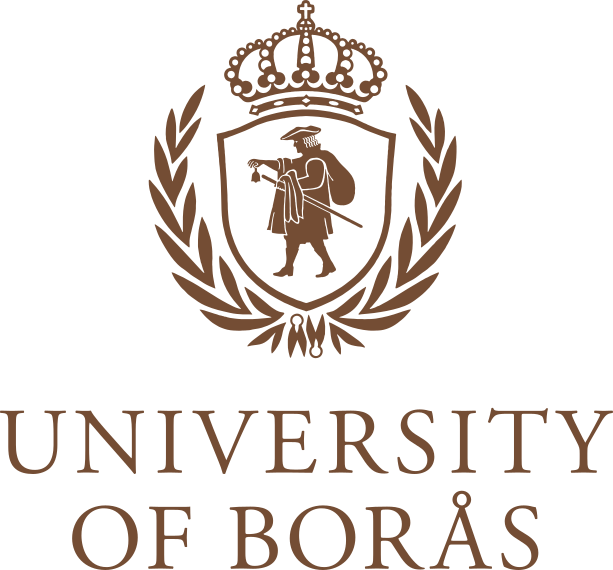Biochar key to new method for recovery of vital phosphorus from sewage sludge
2025-02-03

In her research project in Resource Recovery, doctoral student Naeimeh Vali took on the challenge of recycling phosphorus while reducing the amount of pollutants and removing heavy metals. She has explored how it is possible to transform municipal sewage sludge and agricultural residues into something useful, namely biochar.
The research project has a significant relevance to the treatment of municipal wastewater, which generates large amounts of sewage sludge. This sludge contains almost all the phosphorus from the wastewater together with a significant part of the organic matter. However, this in turn is contaminated by heavy metals, organic pollutants such as pathogens, dioxins, microsites, and antibiotics. At the same time, discussions are ongoing at national and EU level to ban the sludge as it is currently treated from being placed on agricultural land.
Application in agriculture and environmental areas
Biochar is a material that in turn can be used to recover nutrients such as phosphorus, which is very important for agriculture as it is a constituent of fertilizers. At the same time, biochar helps to reduce the amount of harmful pollutants that can otherwise enter the environment. Biochar has caught the eye of industry, but research into its possible applications is still in its infancy.
“Phosphorus is crucial for food production, for example, but it is a finite resource that must be managed wisely. At the same time, untreated waste can damage the environment. I have focused on understanding how different factors affect the recycling of phosphorus and the removal of heavy metals in biochar produced from municipal sewage sludge,” said Naeimeh Vali.
In her project, she has focused on sewage sludge together with agricultural residues in various compositions with pyrolysis, a process in which a substance is heated to a critical temperature in an oxygen-free environment, so that the material decomposes without any combustion taking place.
“By testing different compositions of materials and different temperatures, I have been able to investigate the properties of biochar to see how it can be improved to remove heavy metals, recover phosphorus and ensure the long-term stability of biochar for applications in the agricultural and environmental fields”, explained Naeimeh Vali.
High concentration of carbon and nutrients
The results of the project are positive and show that the concentration of carbon and nutrients in the biochar produced, including phosphorus, is high and can be used either as a soil improver or for further processing in industry.
“Another finding was that mixing sewage sludge with agricultural residues, such as wheat straw or bakery waste, during co-pyrolysis can yield more plant-available phosphorus. At the same time, this process reduces the presence of organic compounds and heavy metals in the biochar, making it safer and more useful.”
The project shows that the pyrolysis and co-pyrolysis method can then be a suitable process with a win-win result where nutrients are recovered and pollutant emissions are reduced.
What is your next step as a researcher?
“I believe that biochar can revolutionise the circular economy and environmental clean-up. I was lucky to work with biochar, as this is an area of applied research that is not well researched, but where the biochar industry is expanding,” said Naeimeh Vali.
“My next step as a researcher is to develop several methods to promote the application of biochar for sustainable development, such as assessing new applications for biochar derived from municipal sewage sludge, including its potential in environmental remediation and material development. I would then like to promote greater cooperation with industry to scale up these methods and bridge the gap between research and practical implementation. That's my vision.”
How has your time as a doctoral student at the Swedish Center for Resource Recovery been?
“It’s been an incredible journey! I have had the chance to work with exciting research, collaborate with brilliant colleagues and grow both personally and professionally. The supportive environment, along with the commitment of colleagues to tackling global challenges, has been truly inspiring.”
Read more
Doctoral thesis Engineering Biochar from Municipal Sewage Sludge: An Experimental and Theoretical Study
The doctoral thesis defence took place at the Swedish Center for Resource Recovery, University of Borås, 31 January.
Principal supervisor: Anita Pettersson, Associate Professor
Assistant supervisor: Abas Mohsenzadeh, Senior Lecturer
External examiner: Flemming Jappe Frandsen, Professor Department of Chemical and Biochemical Engineering. Technical University of Denmark (DTU)
The doctoral project links to the 2030 Agenda global goals
The project supports the UN Sustainable Development Goals (SDGs)
Objective 6 (Clean water and sanitation): Reduce pollution in wastewater
Objective 12 (Responsible consumption and production): Recycle waste into valuable resources
Objective 13 (Climate action): Promote sustainable waste management to reduce CO2 emissions
Objective 15 (Life on land): Improve soil health for sustainable agriculture
The government’s report on sustainable sludge management, SOU 2020:3 (in Swedish)
Solveig Klug
Solveig Klug. Background: Adobestock

